If you think Indian currency notes are just for buying groceries or paying cab fare — think again. That innocent-looking ₹10 or dusty old 1 rupee note in your wallet is basically a mini history textbook, a tech flex, and a culture tour all rolled into one.
Yeah, we said it — money talks, and Indian rupees? They scream heritage, innovation, and vibes.
In this blog, let’s decode the hidden stories on the backside of Indian notes — from space missions to stepwells, from oil rigs to tigers. Spoiler: these aren’t just pretty pictures — they’re chapters from India’s past, present, and future.
1 rupee note – India’s First Offshore Oil Rig
Most people don’t even know 1 rupee notes still exist. But they do — and unlike other denominations, they’re printed by the Ministry of Finance, not the Reserve Bank of India. Unique, right?
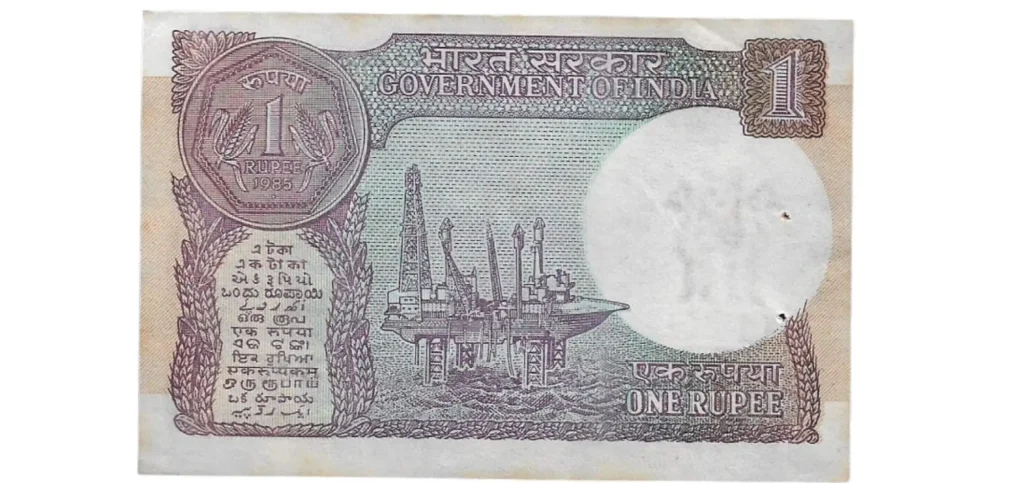
On the back side of this tiny note, there is an image of the Sagar Samrat oil rig, India’s first offshore drilling rig. This rig drilled its first well in 1974 and was later transformed into a Mobile Offshore Production Unit. It’s basically India’s way of saying: “We dig our own oil, thank you.”
Interestingly, this note was first printed in 1917 during World War I due to a silver shortage in India.
2 Rupee Note – India’s First Satellite on a Piece of Paper
This ₹2 note, which the RBI doesn’t print anymore but is still legal to use, shows Aryabhata — India’s first satellite, launched in 1975. It stopped working just a few days after launch, but honestly, who cares? It was the start of India’s space journey, and that’s a pretty cool thing to have in your wallet.
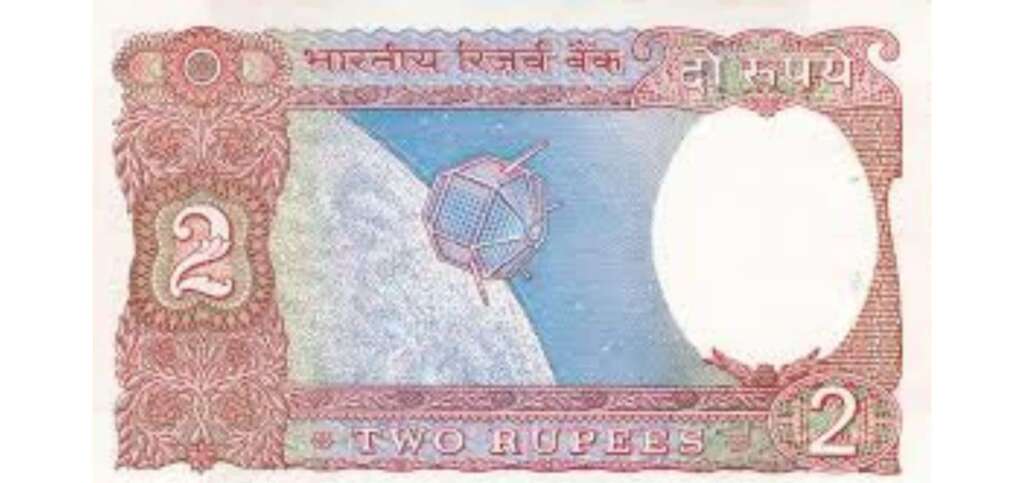
5 Rupee Note – Tractors and the Power of Farming
Ever seen a farmer ploughing a field on a note? That’s what’s on the ₹5 note — a tribute to the Green Revolution that helped India become self-sufficient in food grains in the 1960s and 70s.
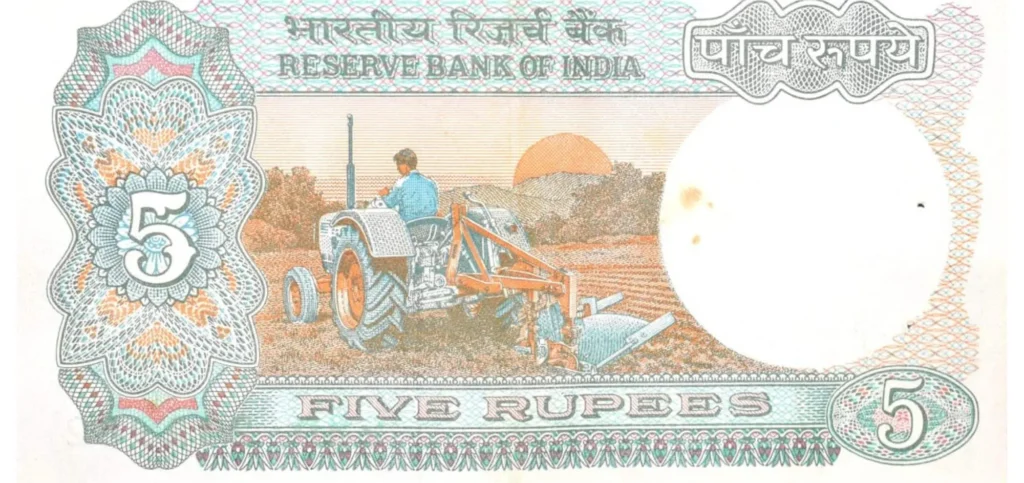
Even though new ₹5 notes aren’t being printed now, they remain legal.
10 Rupee Note – “From Wildlife to Temple Wheels”
The older ₹10 notes used to feature India’s wildlife trio: the elephant, rhinoceros, and tiger — reminding us just how biodiverse this country is.
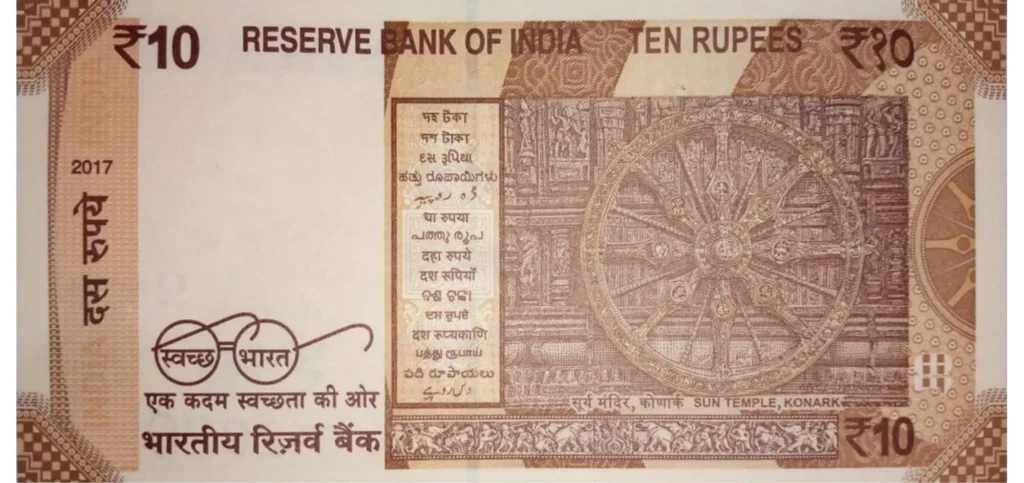
But after demonetisation in 2016, the design changed. Now, the new ₹10 note flaunts the Konark Sun Temple wheel from Odisha. This isn’t just art — it’s a tribute to India’s ancient engineering and architecture.
The wheel has 8 major spokes and 8 minor ones, possibly symbolizing time and movement. Deep.
20 Rupee Note – “Rock-Cut Caves”
Most people miss this, but the older ₹20 note had an image of Mount Harriet Lighthouse from Port Blair, surrounded by palm trees. It’s calm, coastal, and oddly relaxing for a currency design.
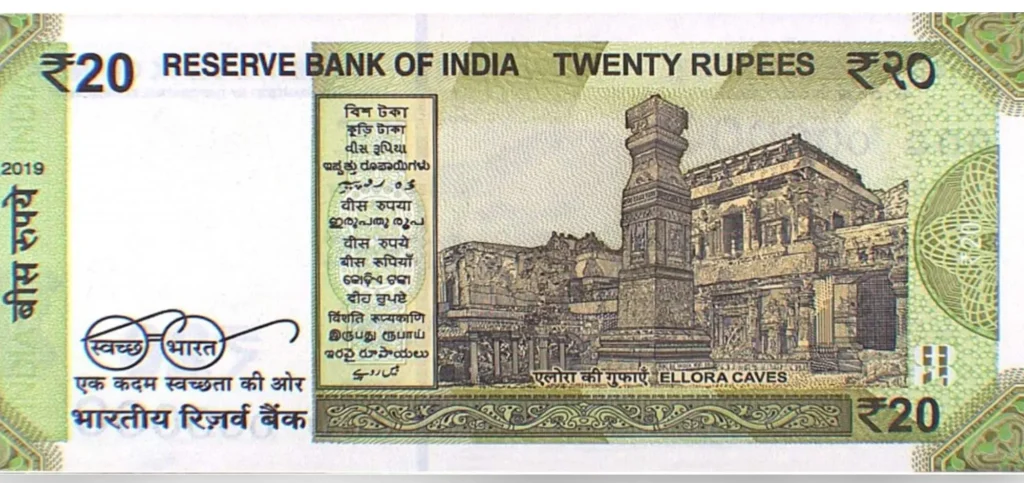
The current ₹20 note showcases the Ellora Caves in Maharashtra — stunning rock-cut temples from the 5th century that reflect Hindu, Buddhist, and Jain traditions. A perfect example of India’s unity in diversity!
50 Rupee Note – “A Stone Chariot That Hasn’t Moved in 700 Years”
The ₹50 note features the Hampi Stone Chariot from Karnataka — a symbol of the grand Vijayanagara Empire, known for its breathtaking temples and intricate carvings that truly leave you in awe.
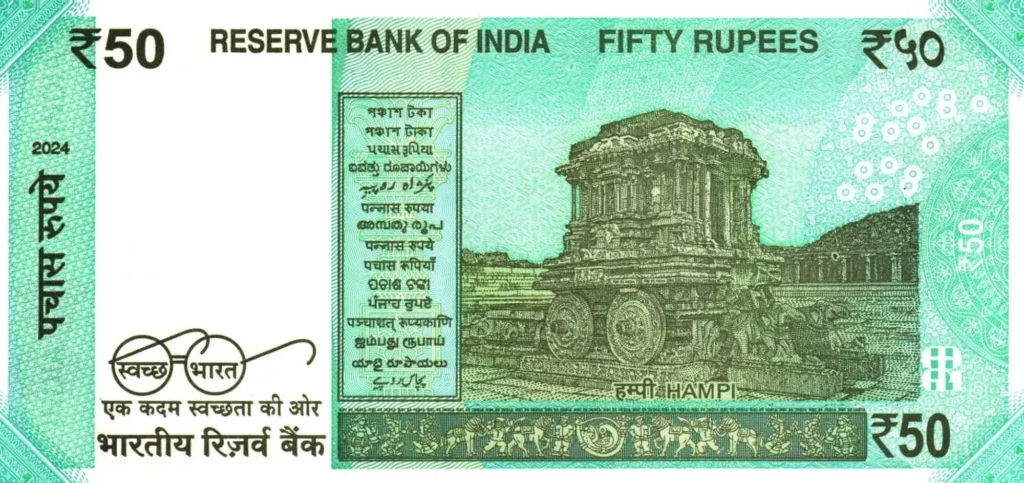
This isn’t just history — it’s an Instagram-worthy monument way before Instagram existed.
It also features the Swachh Bharat logo, because even our notes are part of the cleanliness campaign!
100 Rupee Note – “A Stepwell That’s Actually an Upside-Down Temple”
The beautiful purple ₹100 note gives you a glimpse of Rani ki Vav, a stepwell from Gujarat built in the 11th century. It’s shaped like an inverted temple and is decked out in carvings that rival any European cathedral.
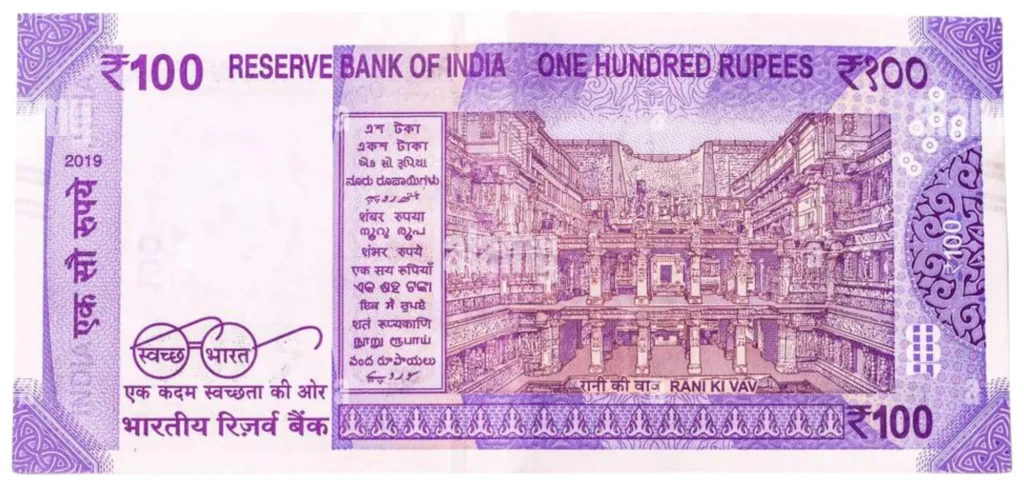
Yes, this is a water storage system — but also a work of art. Don’t underestimate Indian engineering, ever.
200 Rupee Note – “A Buddhist Peace Symbol”
The ₹200 note is a relative newbie — it only came into existence after the 2016 Demonetisation of ₹500 and ₹1,000 Notes. On its back side, The Sanchi Stupa, built by Emperor Ashoka in the 3rd century BCE.
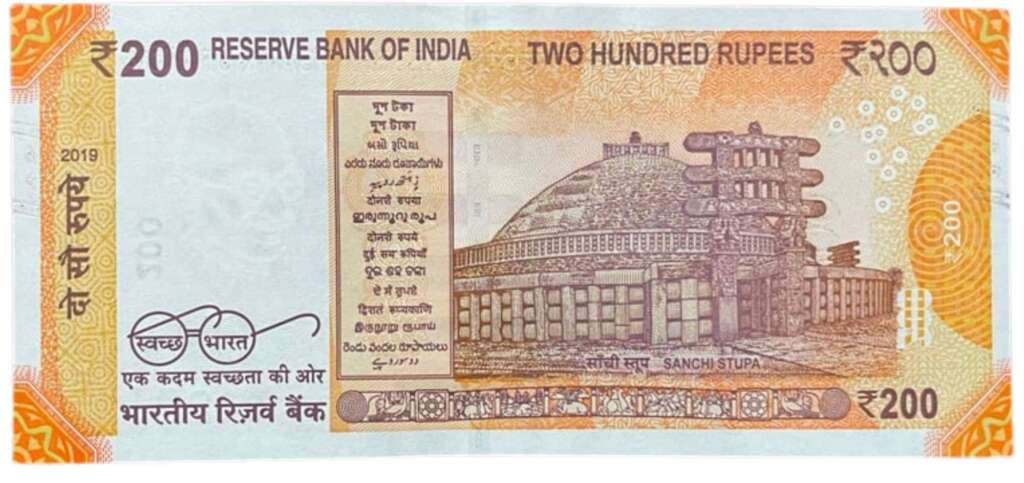
This Buddhist monument symbolizes peace, Dharma, and enlightenment, making your cash way more spiritual than you thought.
500 Rupee Note – “Forts, Flags, and Freedom”
The new ₹500 note shows the Red Fort in Delhi, a 17th-century masterpiece built by Shah Jahan. Today, it’s more than just a monument — it’s the place where India’s Prime Minister hoists the national flag every Independence Day.
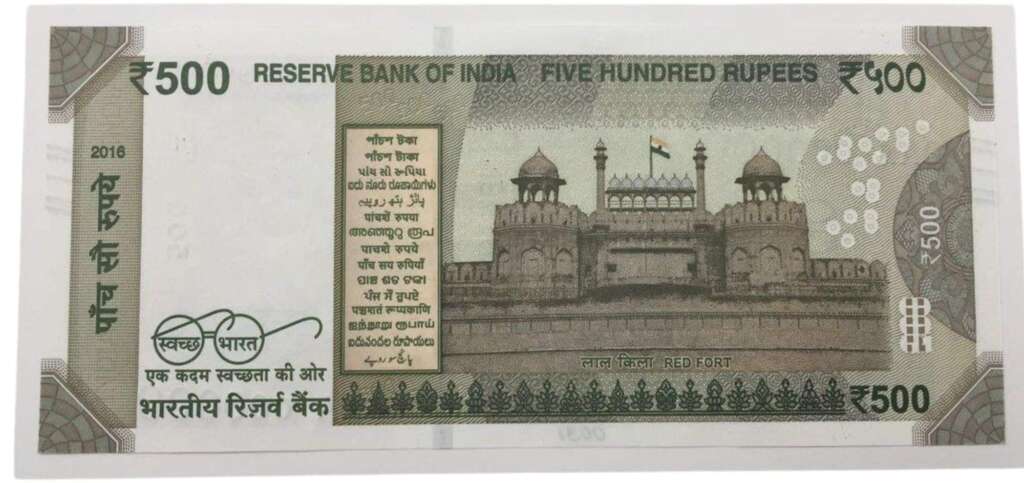
It’s a reminder that our freedom wasn’t free — and it’s worth a lot more than ₹500.
Oh, and there’s the Swachh Bharat logo again — because Gandhiji would’ve wanted it.
2000 Rupee Note – “Mangalyaan, India’s Mission to Mars”
After the 2016 demonetisation of ₹500 and ₹1,000 notes, the RBI introduced the ₹2000 note, which features Mangalyaan — India’s Mars Orbiter Mission launched in 2013.
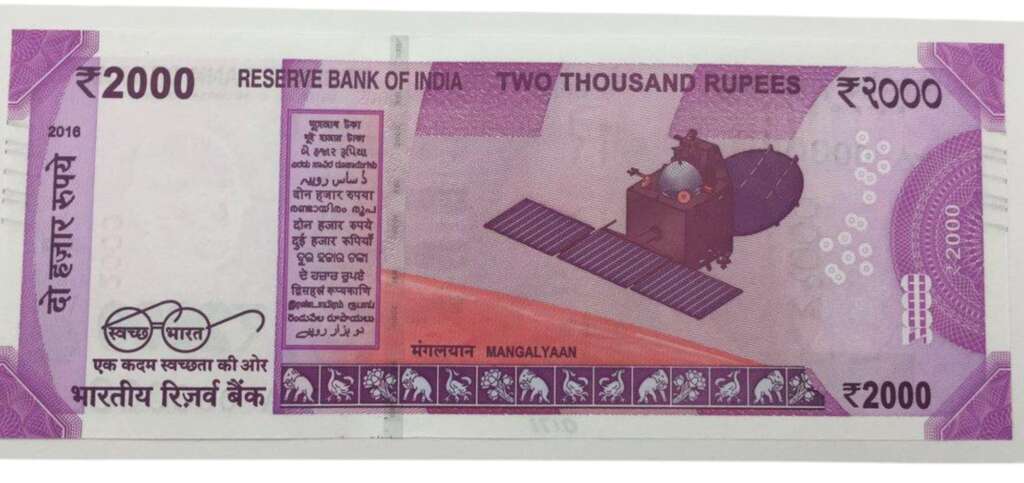
It was a historic moment as India became the first Asian country to reach Mars orbit, and the first in the world to do it in its very first attempt.
The best part? The whole mission cost just ₹450 crore (around $73 million) — cheaper than some Bollywood space movies! Now that’s real value for money.
Nerd Out! How Much Does It Cost to Print These?
Yep, we dug this up too:
| Note | Approx. Printing Cost |
| ₹10 | ₹0.96 |
| ₹20 | ₹0.96 |
| ₹50 | ₹1.81 |
| ₹100 | ₹1.20 |
| ₹200 | ₹2.93 |
| ₹500 | ₹2.94 |
| ₹2000 | ₹3.54 |
But Why All These Images on Notes? What’s the Point?
Great question. Here’s the lowdown:
- Culture & Identity: From temples to lighthouses to forts — every image celebrates a piece of India’s soul.
- Science & Tech: Aryabhata, Sagar Samrat, Mangalyaan — because we’re more than just ancient monuments.
- Economy & Roots: Farmers, oil rigs, stepwells — showcasing our backbone and resourcefulness.
- Global Message: These notes aren’t just for us. They also tell the world who we are — diverse, ancient, ambitious, and future-forward.


Leave a Comment